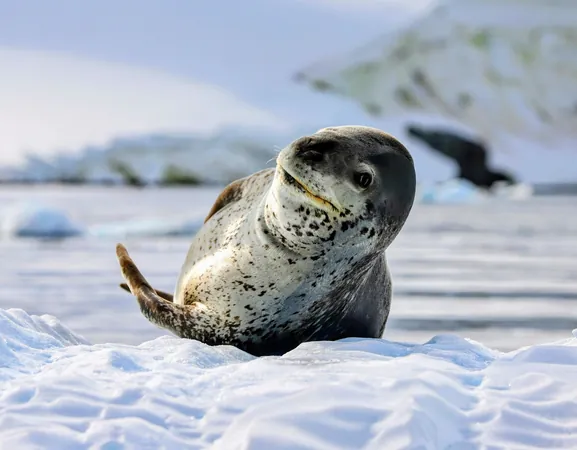
Leopard Seals: The Unsung Architects of Antarctic Ecosystems
2025-06-28
Author: Wei
Recent research has flipped our understanding of leopard seals on its head. Contrary to previous belief that they had diverse diets, it turns out many of these remarkable marine predators are choosy eaters, and this has significant implications for the Antarctic ecosystem.
Dietary Specialization: A Surprising Discovery
Scientists analyzed stable isotope data from 46 whiskers of 34 individual seals over a decade. The findings were startling: 59% of the seals were dietary specialists, while only 13% were true generalists. This suggests that individual seals play a more crucial role in local food webs than previously understood.
Dr. Emily Sperou from Baylor University emphasized, "Even though leopard seals as a species consume various prey types, most individuals tend to focus on just a handful. This specialization can significantly impact specific prey populations, altering the entire ecosystem."
Distinct Foraging Styles Uncovered
The research identified two long-term foraging styles among the seals. Some seals, like individual 397, remained consistent high-level specialists for years, targeting valuable prey like fur seal pups and large fish. Others switched their diets significantly, demonstrating flexibility that may help them adapt to changes in prey availability or competition.
Powerful Predators: The Role of Female Leopard Seals
Interestingly, larger female leopard seals consistently hunted at higher trophic levels compared to their male counterparts. These females dominated as high-level dietary specialists, with their size providing them the strength to capture more energy-dense prey. This enables them to exert a disproportionate influence on local prey populations.
The Ripple Effect on Prey Dynamics
Research highlighted that a few powerful female seals were behind the majority of predation on fur seal pups. Seal 397 stood out, noted for her effective ambush tactics and high capture rates, demonstrating how individual behavior can profoundly influence ecological balance.
Declines in Prey and Their Ramifications
A significant drop in stable nitrogen isotope values between 2015 and 2017 correlated with declines in Antarctic fur seal and penguin populations. In tandem, the leopard seal population at Cape Shirreff fell by 76%. As competition dwindled, remaining seals gradually regained access to richer prey.
A Call for Reevaluation in Conservation Practices
This research underscores the necessity of recognizing individual variations in predator behavior for conservation strategies. Oversimplified assumptions about species may lead to misguided management decisions, especially in times of climate change and ecosystem stress.
Looking Ahead: Future Research Opportunities
While the study utilized stable isotope data, it highlighted the need for future research combining this with tracking and observational data. The findings may extend beyond Cape Shirreff, impacting conservation efforts across the Southern Ocean.
This compelling research reveals just how impactful individual dietary choices can be, reminding us that even in the icy depths of the Antarctic, the choices made by a few key players can shape the fate of entire species.


 Brasil (PT)
Brasil (PT)
 Canada (EN)
Canada (EN)
 Chile (ES)
Chile (ES)
 Česko (CS)
Česko (CS)
 대한민국 (KO)
대한민국 (KO)
 España (ES)
España (ES)
 France (FR)
France (FR)
 Hong Kong (EN)
Hong Kong (EN)
 Italia (IT)
Italia (IT)
 日本 (JA)
日本 (JA)
 Magyarország (HU)
Magyarország (HU)
 Norge (NO)
Norge (NO)
 Polska (PL)
Polska (PL)
 Schweiz (DE)
Schweiz (DE)
 Singapore (EN)
Singapore (EN)
 Sverige (SV)
Sverige (SV)
 Suomi (FI)
Suomi (FI)
 Türkiye (TR)
Türkiye (TR)
 الإمارات العربية المتحدة (AR)
الإمارات العربية المتحدة (AR)